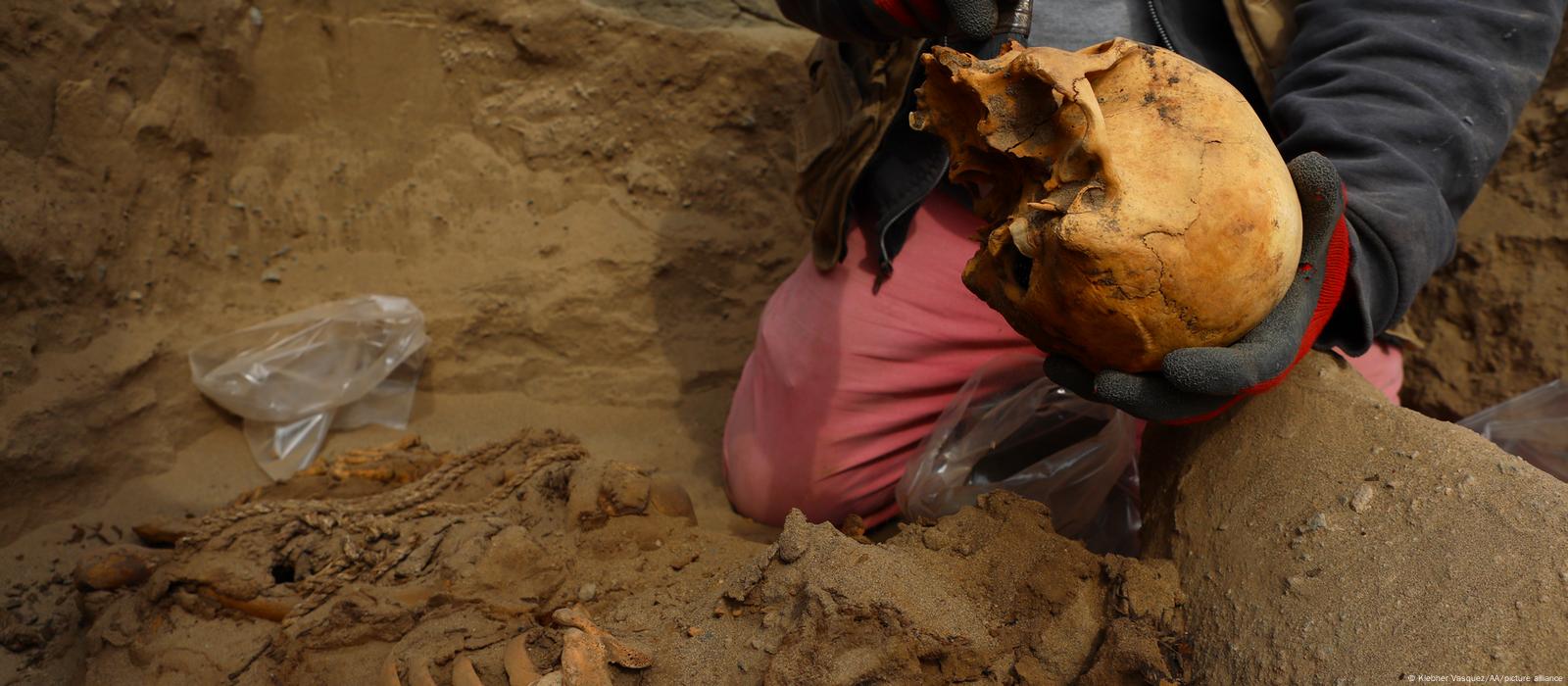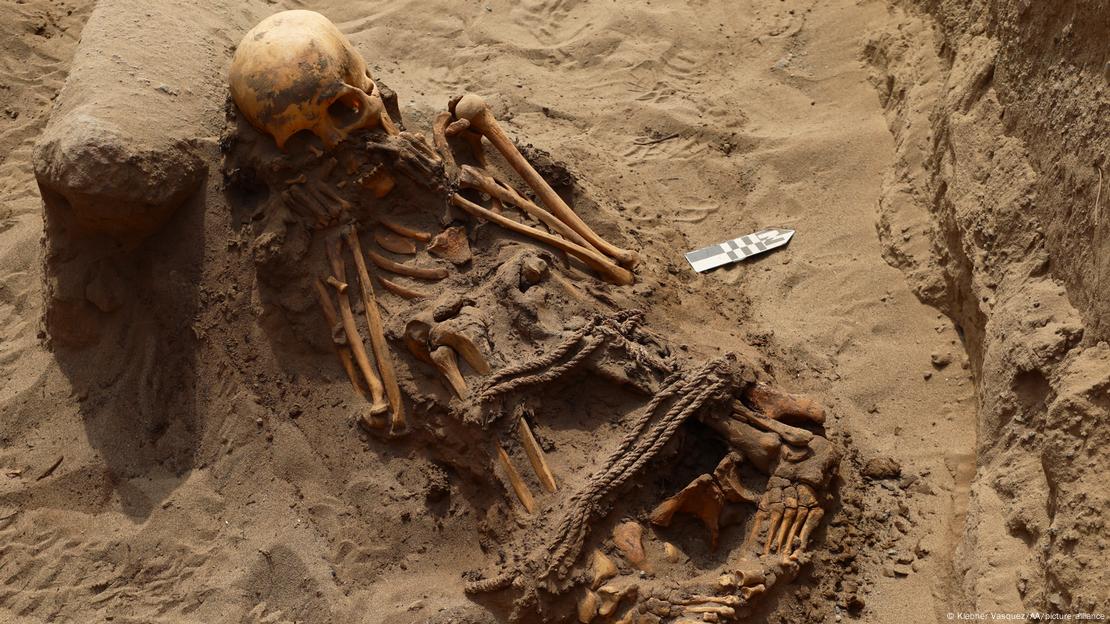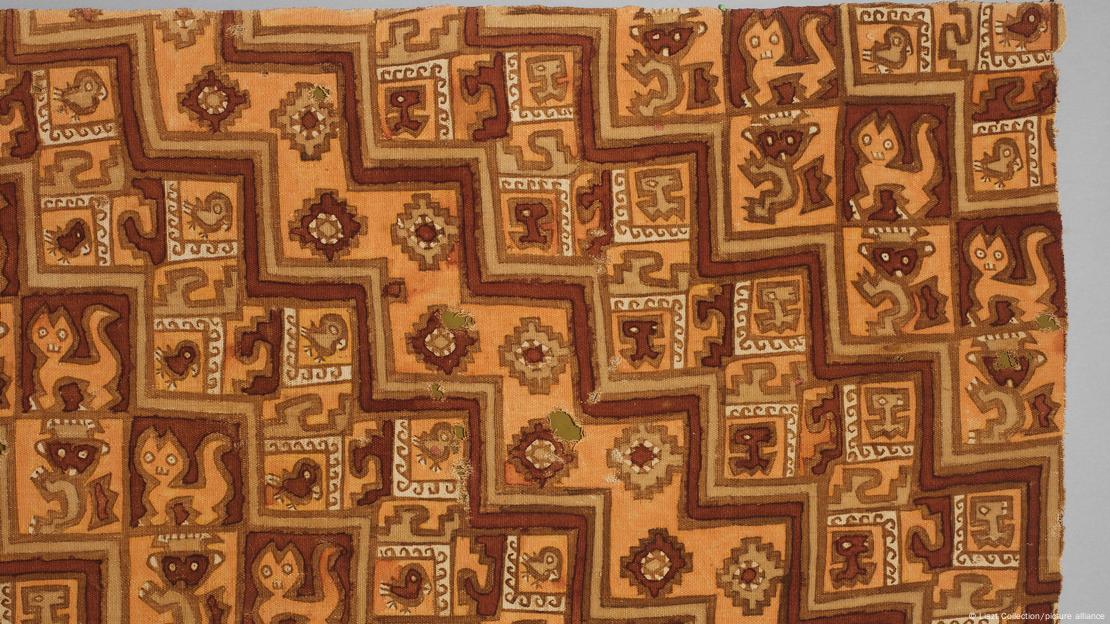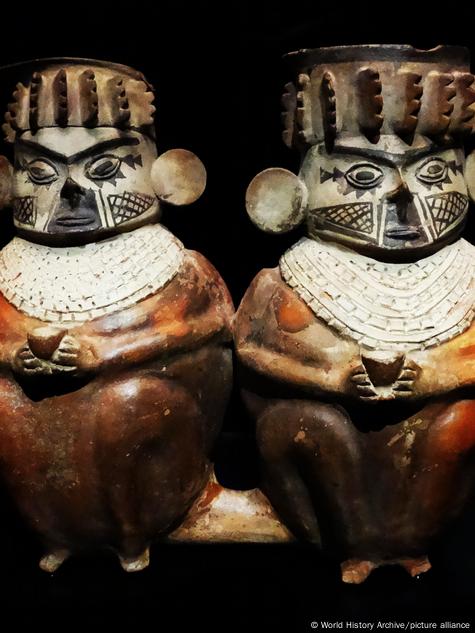
Suzanne Cords
DW
15 hours ago
Not much is known about the Chancay people, who preceded the powerful Inca. The discovery of 30 graves could provide more insight into their culture.
"The graves we're finding in these excavations belong to the year A.D. 1000 up to 1440," Pieter Van Dalen, an archaeologist at the National University of San Marcos in Lima, told the press agency Reuters.
The burial sites date back to the heyday of the Chancay people, who once inhabited the fertile valleys near the coast. Their name stems from the Chancay Valley which is the main region which they once had inhabited.
Little is known about this pre-Inca culture, and researchers hope to learn more from the burial sites, specifically from the tombs belonging to the elite that were found at up to 5 meters (16.5 feet) below the ground. According to the team's initial findings, they are very lavishly designed. The deceased were wrapped in textiles alongside ornately decorated vessels of various sizes.
The graves unearthed belong to people from different social classes, Van Dalen said.
15 hours ago
Not much is known about the Chancay people, who preceded the powerful Inca. The discovery of 30 graves could provide more insight into their culture.
"The graves we're finding in these excavations belong to the year A.D. 1000 up to 1440," Pieter Van Dalen, an archaeologist at the National University of San Marcos in Lima, told the press agency Reuters.
The burial sites date back to the heyday of the Chancay people, who once inhabited the fertile valleys near the coast. Their name stems from the Chancay Valley which is the main region which they once had inhabited.
Little is known about this pre-Inca culture, and researchers hope to learn more from the burial sites, specifically from the tombs belonging to the elite that were found at up to 5 meters (16.5 feet) below the ground. According to the team's initial findings, they are very lavishly designed. The deceased were wrapped in textiles alongside ornately decorated vessels of various sizes.
The graves unearthed belong to people from different social classes, Van Dalen said.

This skeleton was discovered during the construction of a gas pipeline
Image: Klebher Vasquez/AA/picture alliance
Skilled craftspeople
So far, the findings are consistent with what archaeologists already knew about the Chancay, who were noted as talented craftspeople. Thousands of their textiles have survived to this day, meaning that they must have produced them on a large scale.
HUMANS MANUFACTURE SINCE PREHISTORIC TIMES SUCH AS WITH USE OF OCHRE
The fabrics are exquisitely crafted and dyed in shades of yellow and brown, as well as scarlet, lavender blue and olive green. Popular motifs were birds and a deity with a crescent-shaped headdress.
The fabrics are exquisitely crafted and dyed in shades of yellow and brown, as well as scarlet, lavender blue and olive green. Popular motifs were birds and a deity with a crescent-shaped headdress.

Textiles like this one demonstrate the art of the Chancay people
Liszt Collection/picture alliance
The ceramics are also a testimony to the Chancay's artistic talent. Works are often black and white and feature geometric or highly simplified animal and human motifs. Large clay dolls, which often represented the female sex, were also commonly produced.
The ceramics are also a testimony to the Chancay's artistic talent. Works are often black and white and feature geometric or highly simplified animal and human motifs. Large clay dolls, which often represented the female sex, were also commonly produced.

A terracotta double vase from the Chancay culture
World History Archive/picture alliance
For all their craftsmanship, however, the Chancay were apparently not great warriors. Historians assume that at the beginning of the 15th century, the Chimu conquered their territories to the south and that later the Inca finally subjugated them around 1450.
Hoping for new insights
About 2,000 graves have already been discovered in the region in recent years, so archaeologists are hopeful that the 30 graves found roughly 75 kilometers (45 miles) north of Peru's capital, Lima, will provide new insights into the social and political structures of the Chancay civilization.
But, first, the remains will be meticulously cleaned and carefully stored. Perhaps then they will be able to reveal some secrets from the vanished world of Chancay.
This article was originally written in German.
For all their craftsmanship, however, the Chancay were apparently not great warriors. Historians assume that at the beginning of the 15th century, the Chimu conquered their territories to the south and that later the Inca finally subjugated them around 1450.
Hoping for new insights
About 2,000 graves have already been discovered in the region in recent years, so archaeologists are hopeful that the 30 graves found roughly 75 kilometers (45 miles) north of Peru's capital, Lima, will provide new insights into the social and political structures of the Chancay civilization.
But, first, the remains will be meticulously cleaned and carefully stored. Perhaps then they will be able to reveal some secrets from the vanished world of Chancay.
This article was originally written in German.
No comments:
Post a Comment